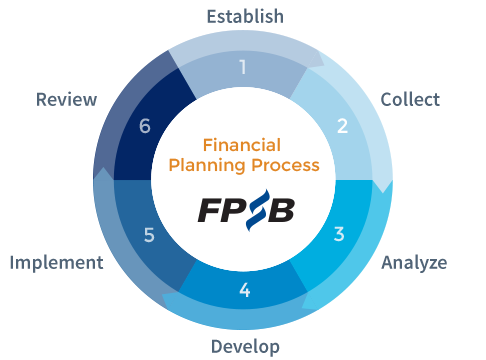
Bankruptcy is feared, unanticipated, and frustrating for any business owner. When it’s looming over your head, it’s important to know all ins and outs of the process. While bankruptcy is not a death sentence for your business, it’s could be harmful.
Learning all you can about what happens when a business goes bankrupt can help you avoid unfortunate mistakes and prepare for the future. In this article, we’ll share information about what to expect from business bankruptcy.
What is Business Bankruptcy?
When a business is in a poor financial situation, owners can file for Chapter 7, 11 or 13 bankruptcy. The Chapter you choose depends on how bad the debt level is and what your plans for the future are. When you file for Chapter 7, the business will likely be liquidated while assets shared by the creditors.
If you file for Chapter 11 or 13 bankruptcy, you can hope for the reorganization of debts. In such a case, the business can continue working. According to an expert business broker, Cress Diglio, it’s even possible to sell a company that has filed for Chapter 11 or 13 bankruptcy.
When the word bankruptcy first appears on the horizon, it could seem like the end of the world. The entire process is scary and complex. That’s why business owners opt for professional assistance. A bankruptcy attorney could help you deal with the situation in the most efficient way possible.
If you feel as if the company is failing, bankruptcy could be a solution it needs at the moment. Business bankruptcy is designed to help companies that experience debt problems. Instead of viewing it as something fearful, consider bankruptcy as an assistant. However, it comes with several serious consequences, one of which could be a high cost. That’s why a decision to file should never be made lightly.
Overall, bankruptcy could help your company stay afloat when all else seems to fail. Some business owners decide to file for bankruptcy to get out of a sinking debt situation and start anew.
The bankruptcy filing process, as well as the outcome, depend on the type of bankruptcy. You need to carefully consider all the pros and cons of each type, including costs, consequences, and opportunities.
3 Types of Business Bankruptcy
Let’s take a closer look at each bankruptcy type:
Chapter 7 Bankruptcy
Chapter 7 bankruptcy can be considered when it’s obvious that a company doesn’t have a future. The decision whether it’s obvious or not shouldn’t be made solely by the business owner. Professional financial and legal advice is necessary to get a clear picture of perspectives.
Business owners tend to choose this bankruptcy type when they are overwhelmed with debts to a point where reorganization and restructuring don’t appear practical.
Chapter 7 bankruptcy could be a good choice for a company without large assets. Small companies are likelier to choose it than larger enterprises since they don’t have that much to lose.
When you choose Chapter 7 bankruptcy, the court appoints a trustee, who takes full possession of all the company’s assets and distributes them to the creditors to cover your debts as much as possible. After that’s done, the business owner is released of all debts, and the company usually stops functioning.
Chapter 11 Bankruptcy
If you hope to solve your company’s problem and get a fresh start, but debts are overwhelming you, consider Chapter 11 bankruptcy. When you file for this bankruptcy type, the court appoints a trustee, who assists with the company’s reorganization. In some cases, this trustee could be the business owner.
If you want to deal with your debts by using this bankruptcy tool, you need to present a detailed plan of reorganization that involves working out current debts. If the court and creditors accept the plan, you can start taking advantage of it without the debts looming over you.
The key takeaway from Chapter 11 bankruptcy is your ability to extend the debt payments over a substantial period of time. Not all bankruptcies filed under Chapter 11 achieve the desired results due to their complexity. Eventually, some owners may resort to Chapter 7.
Chapter 13 Bankruptcy
This bankruptcy type is used by sole proprietorships. It’s somewhat similar to Chapter 11 because it involves creating a debt repayment plan.
The amount you would need to repay when filing for Chapter 13 depends on how much you earn and the property you own. In case your personal assets are involved as business assets, you could avoid losing them by choosing Chapter 13 bankruptcy over Chapter 7 bankruptcy.
When selecting the right type of bankruptcy to file for, it’s important to consult financial and legal advisors. In some cases, it’s possible to avoid filing altogether.
How Does the Bankruptcy Process Happen?
Once you decide that bankruptcy is the only way to proceed and choose the type to go for, it’s easy to start. Businesses need an attorney to file for bankruptcy. While sole proprietors can do it on their own, legal advice is recommended.
You would need to fill out a form and pay a filing fee. Once the court initiates the bankruptcy case, you’ll be asked for appropriate documentation. It’s important to be ready to disclose all the available documents and information about your company to the court.
Your bankruptcy case will be dealt with in the jurisdiction where your company is located. The U.S. Bankruptcy Court regulates the process.
As the case proceeds, you need to be ready to prepare the paperwork and, for Chapter 11 and Chapter 13 bankruptcies, present a payment plan with a detailed explanation of how you are planning to pay off debts.
After all documents and plans are filed, you have to wait for the court and creditors to approve the plan or initiate the asset distribution process.
How Long Does It Take to Complete a Bankruptcy Process?
The fastest bankruptcy processes are those filed under Chapter 7. They usually take about five months. The same works for Chapter 13 bankruptcy. However, the debt payment time extends for up to five years.
Chapter 11 bankruptcy process is usually the longest. You have to be ready for negotiations with creditors and a long wait for the approval. The entire process could take up to a year.
Even though filing for bankruptcy is unpleasant and costly, it could save your business or give you a brand new debt-free start.






:max_bytes(150000):strip_icc()/basic_budget-965334246-5c48f63f46e0fb0001eaf86b.jpg)








:max_bytes(150000):strip_icc()/diarrhea-in-dogs-1117837-final-aec1d0d846a84c918418f25036c1e36e.png)